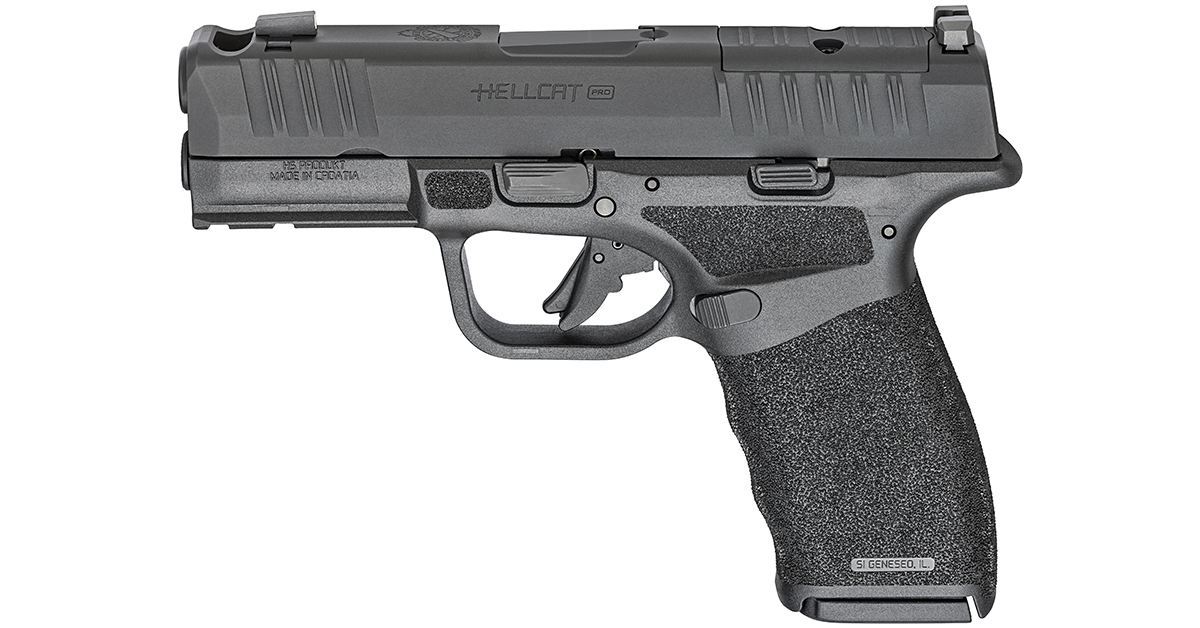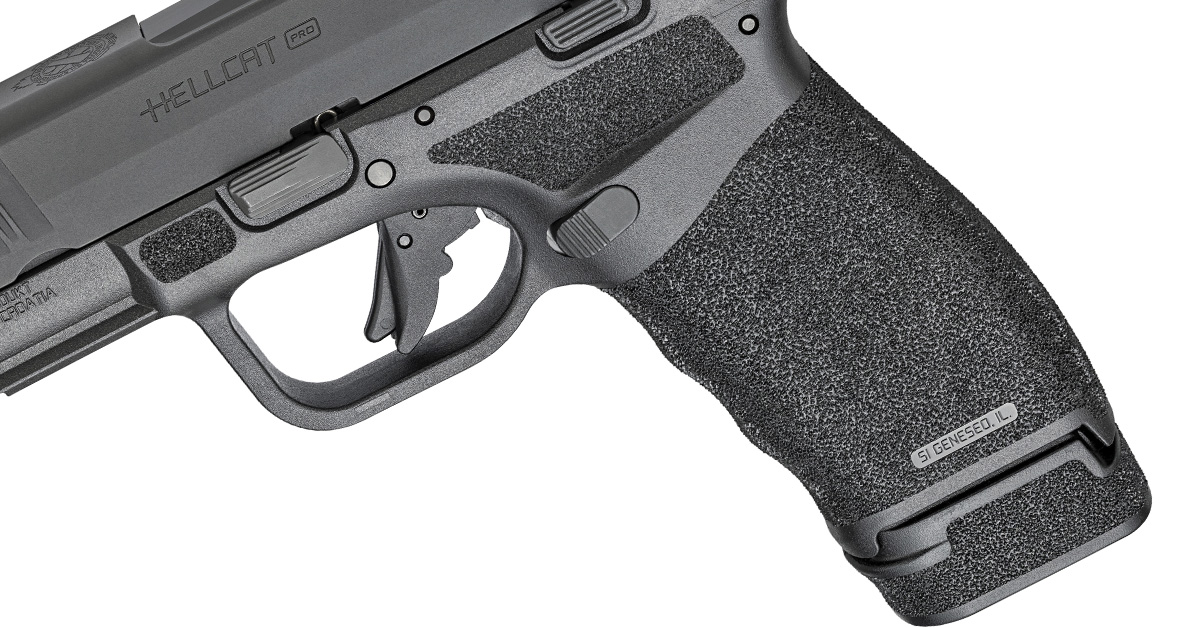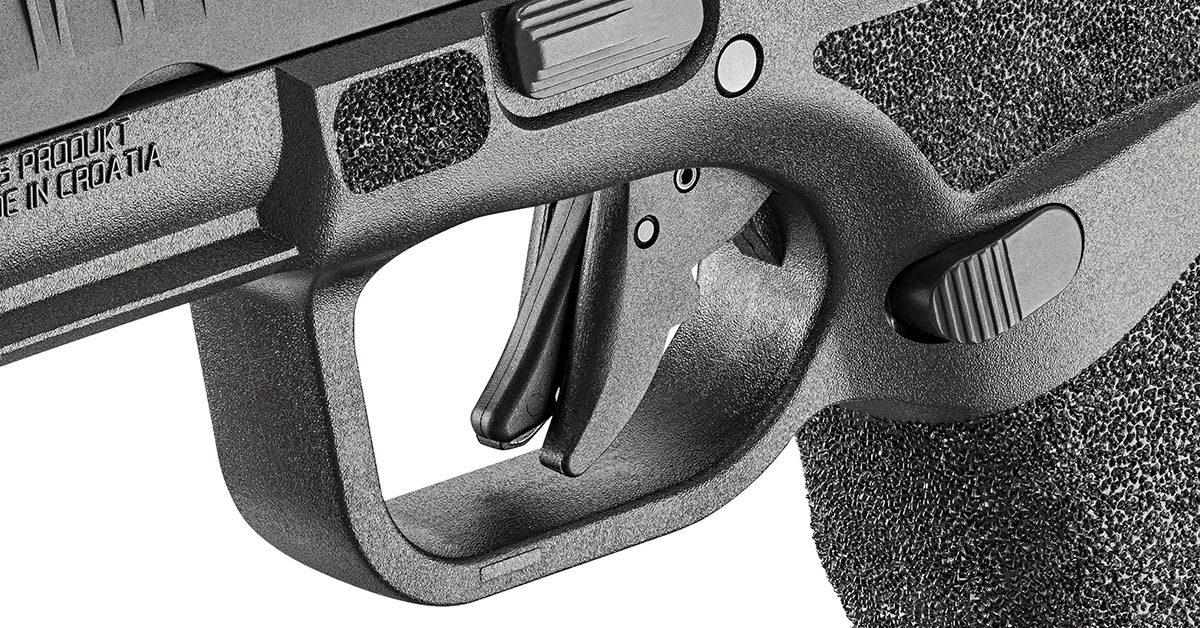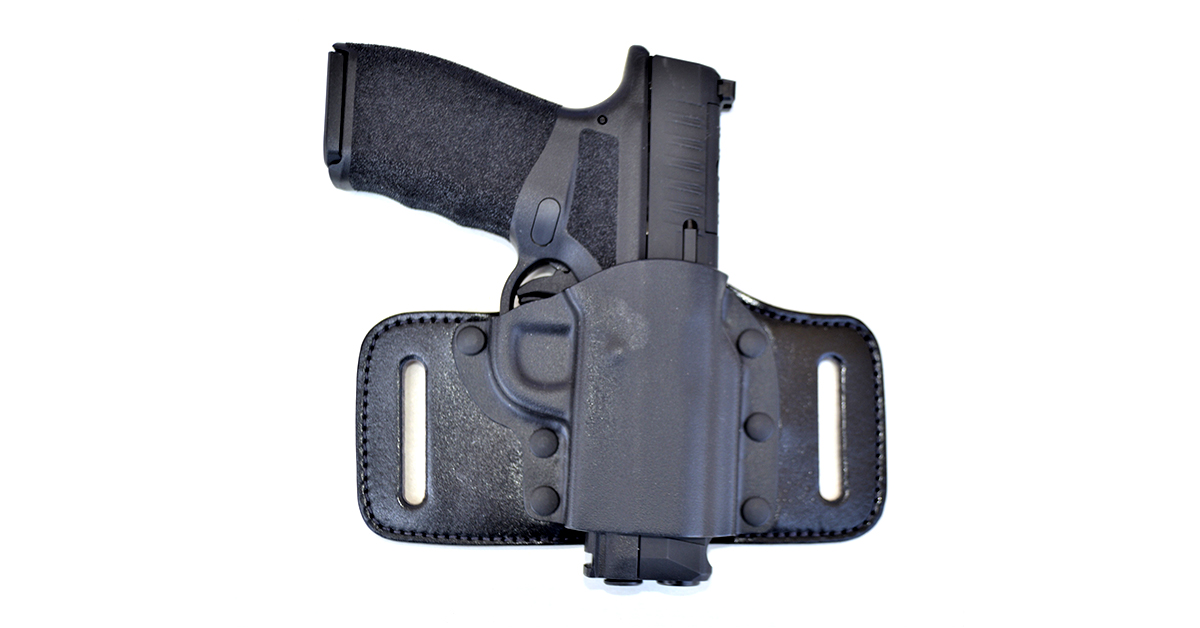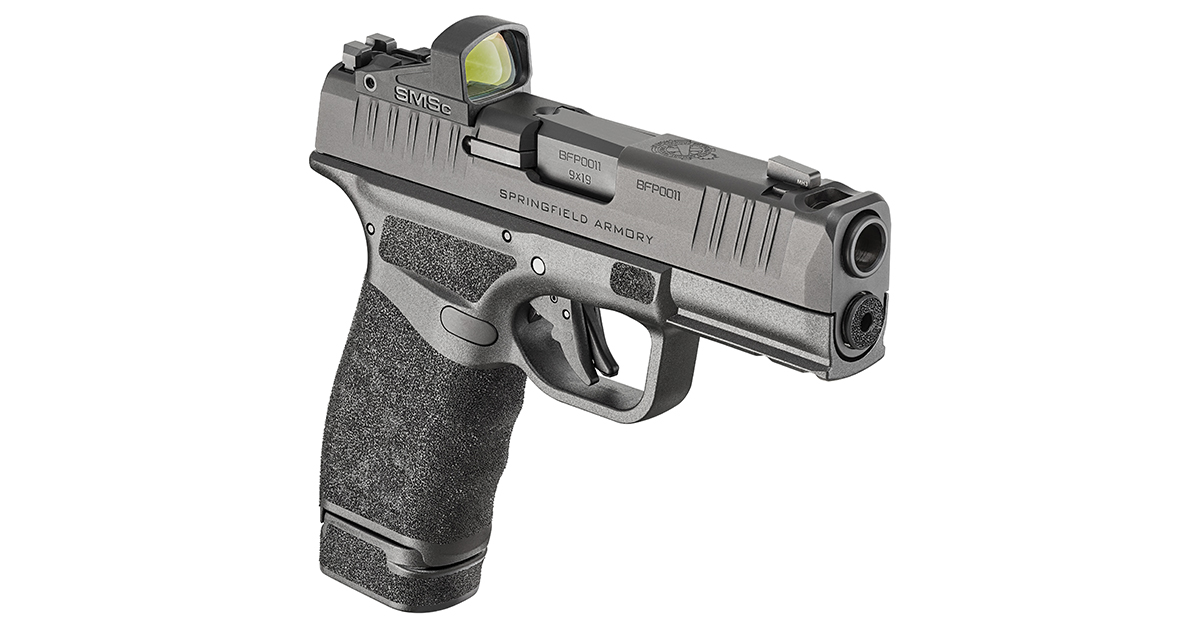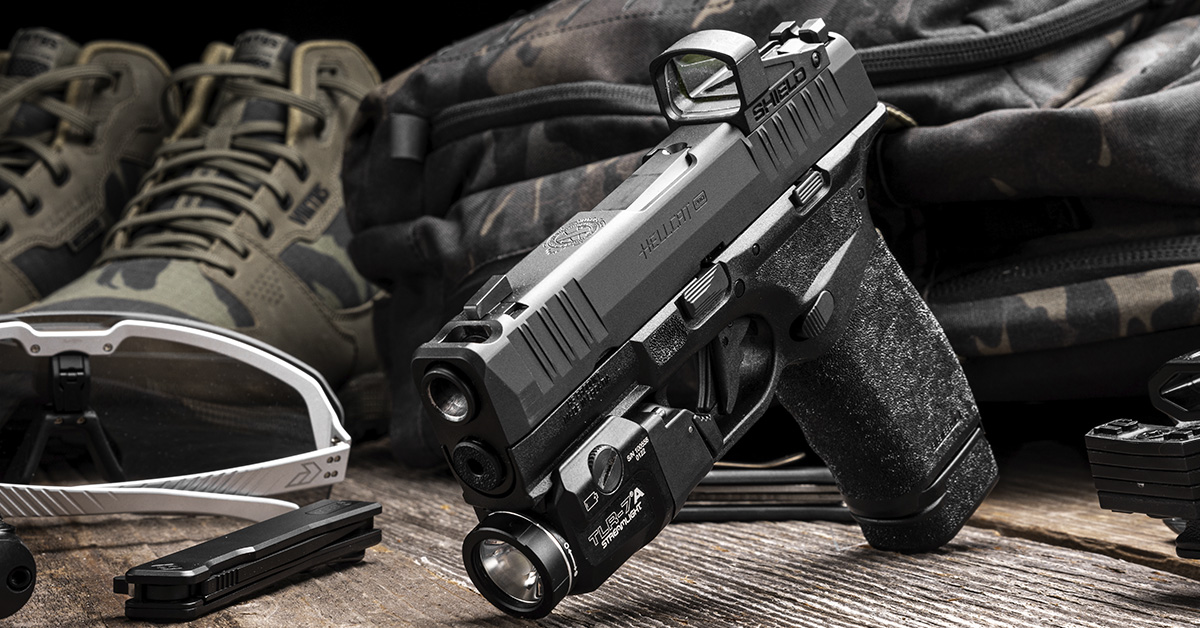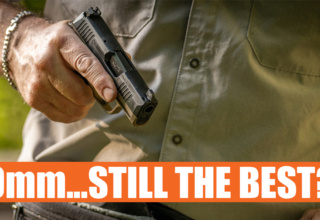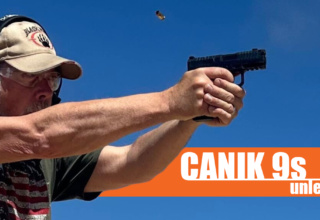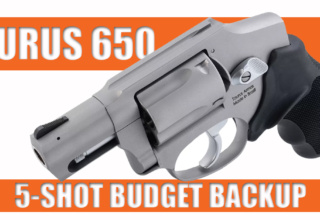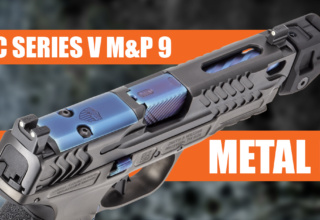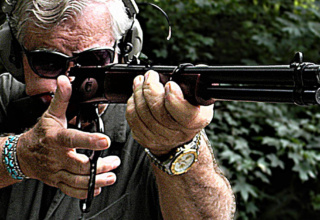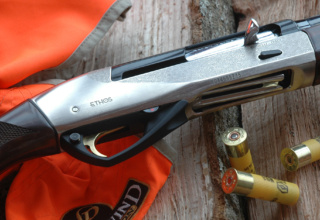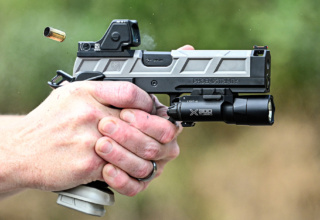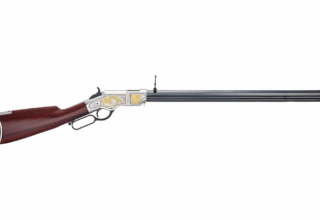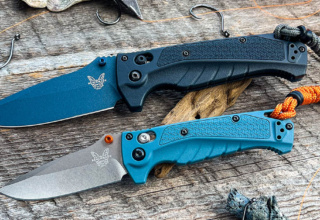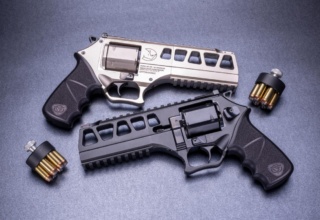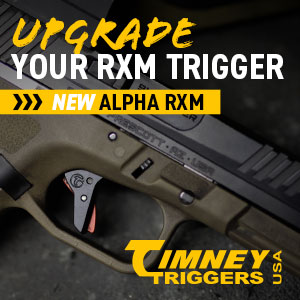An easy-shooting 9mm built for fast follow-up shots even with heavy loads, the Springfield Hellcat Pro Comp OSP also packs light-and-tight for EDC work
by Bob Campbell
The problem of concealed carry of a formidable firearm has been addressed many ways, and in the case of the Springfield Hellcat Pro Comp OSP, we have one of the most successful implementations of modern technology.
Not that long ago, the gap between the efficiency of service-size handguns and compact handguns was huge. Four-inch barrel .38s were great shooters while the snub nose .38 was a chore to qualify with. The “Wonder Nine” 9mm pistols resembled crew served weapons. Easy-to-carry compact .380 pistols and lightweight slimline 9mm types are not ideal. The polymer frame striker-fired evolution gave us much better choices. The design envelope became more flexible and affordable.
The demands of a modern shooter include capacity, shootability, good sights, and lowered recoil. Some of these demands are easily met. Downsizing a pistol is the easy part — just put it on the design table. Making the piece reliable demands a deep knowledge of recoil spring technology. Slide velocity cannot overtake the ability of the magazine to feed a cartridge when the slide is lighter and subject to being violently thrown backward. Much of the recoil force we feel is the weight of the slide as it reaches the end of its travel. No matter how efficient the recoil spring design is, the pistol is still lighter, and the laws of physics don’t play. We are all big girls and boys and can handle recoil, can’t we? Sure, but a lightweight 9mm isn’t as comfortable as you think in firing several hundred cartridges in a rugged training session.
The Hellcat Series
Springfield’s original Hellcat is a subcompact carry gun. The piece may hold its own against anything in the 9mm subcompact class. The Hellcat Pro is a larger pistol — not too big, just heavier and longer enough to be much easier to shoot well. A longer slide and barrel plus a good recoil spring design make for a comparatively easy-shooting 9mm.
With 15- and 17-round magazines, the Hellcat Pro offers a formidable degree of protection, combining the elements of a good defense gun: shootability, accuracy, reliability, and ammunition reserve. If you prefer, you may mount an optic.
Springfield’s Hellcat Pro Comp OSP takes the Pro a step further.
Hellcat Pro Comp OSP…the Big Picture
The pistol manages to incorporate Springfield’s hammer-forged 3.7-inch barrel into the design. The Pro Comp features an integral compensator in the slide. The primary advantage, after firing a few hundred cartridges, seems to be in reducing muzzle flip considerably compared to a comparable non-compensated pistol. Recoil seems lighter than the Pro, but then the 9mm Pro wasn’t a hard kicker to begin with.
The outfit takes some getting used to visually but mechanically it is superb in operation. The dual comp directs gas upwards. The hotter the load the greater the advantage.
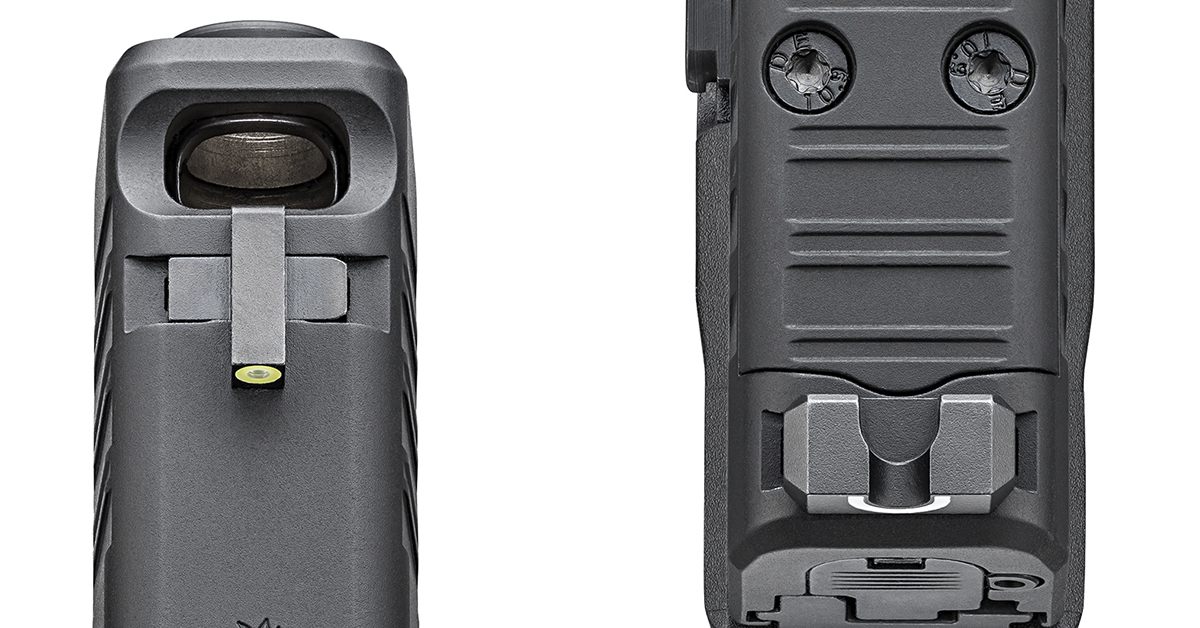
The pistol’s front sight is positioned just behind the port. The Hellcat Pro Comp OSP comes standard with Springfield’s tritium front sight and Tactical Rack U-notch rear sight. I enjoy changing sights out on most polymer frame pistols. This one is going to serve as issued. I find no need for improvement. As for the slightly shorter sight radius, this type of sight setup makes for more rapid sight acquisition at normal defense ranges of five to ten yards. There may be a loss of accuracy at 25 yards compared to a longer barrel/longer sight radius. I don’t find any 25-yard defense shootings in recent memory in my database, and as it turns out, the short radius isn’t that much of a problem when firing off the benchrest. If you mount an optic, the effect is zeroed out.
Noteworthy Callouts
The Hellcat Pro Comp OSP’s grip treatment features an ideal mix of adhesion and abrasion. The mesh of hand and grip is solid but allows the hand to quickly adjust its placement on the draw or when moving during drills. There is an indent forward of the trigger and above the front of the trigger guard. This allows finger placement during critical movement. I don’t move with a finger on the trigger, and you should not either. The grip area leading to the trigger on one side and the magazine release on the other is smooth. Both front and rear straps are roughened, and the front strap features almost imperceptible finger rests. The slide includes forward cocking serrations.
Disassembly is so easy! The Glock system is okay but not my favorite. Springfield wisely chose a lever-type takedown. Be certain the pistol is unloaded, remove the magazine, and lock the slide to the rear. The slide lock is easily manipulated but it isn’t in the way of a tightly molded holster. Rotate the forward edge of the takedown lever upward. Release the slide lock and allow the slide to run forward. The recoil spring and guide is picked out of the slide and the barrel simply tilted up for removal. Assembly is the reverse and not difficult at all.
The double-action-only trigger features a blade lever in the trigger face. The action breaks at 6.5 pounds. The trigger is controllable and gives good feedback as you perform rapid-fire drills.
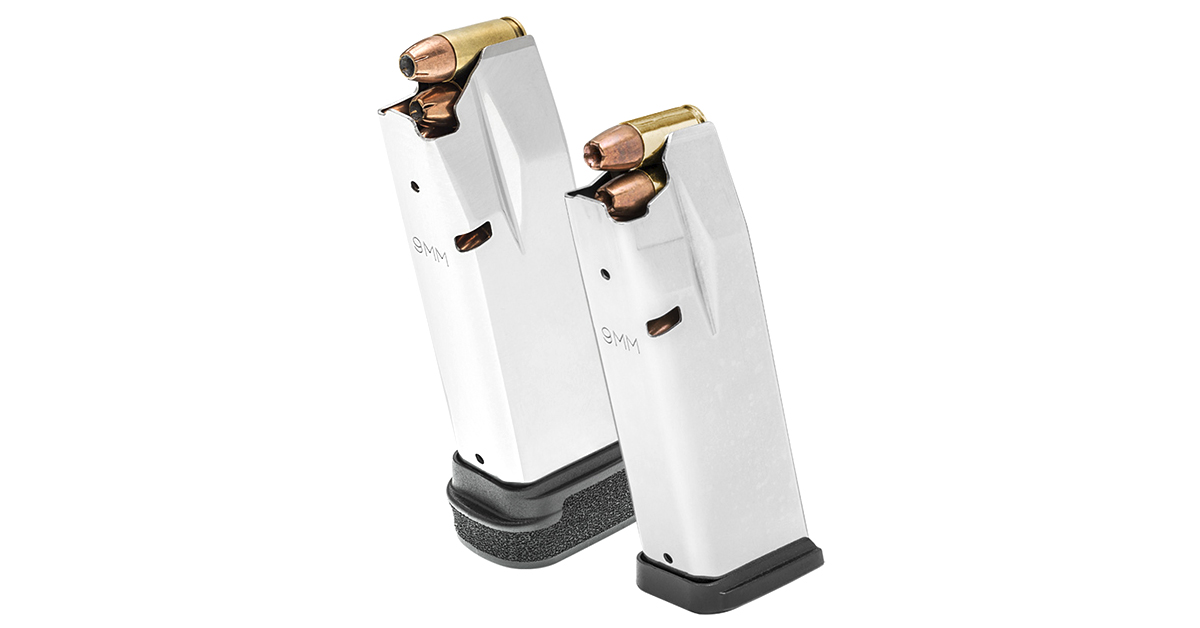
Loads and Loading
Before heading to the range, I did my homework with 100 dry-fire manipulations of the trigger and several speed loads with snap caps. The magazines are stiff to load to full capacity — common with most subcompact pistols with this type of magazine capacity. You will make use of the supplied speed loader.
I chose a good mix of ammunition, from standard velocity target loads to full-power and +P loads. Most loads fired were the Black Hills Ammunition 115-grain FMJ — the standard 9mm practice and recreational loading. In heavyweight practice loads, I chose the Fiocchi 147-grain FMJ. Initial firing was promising. The pistol comes on target quickly, lines up with a natural point due to the well-designed grip and good balance, and speed to an accurate first shot hit is good.
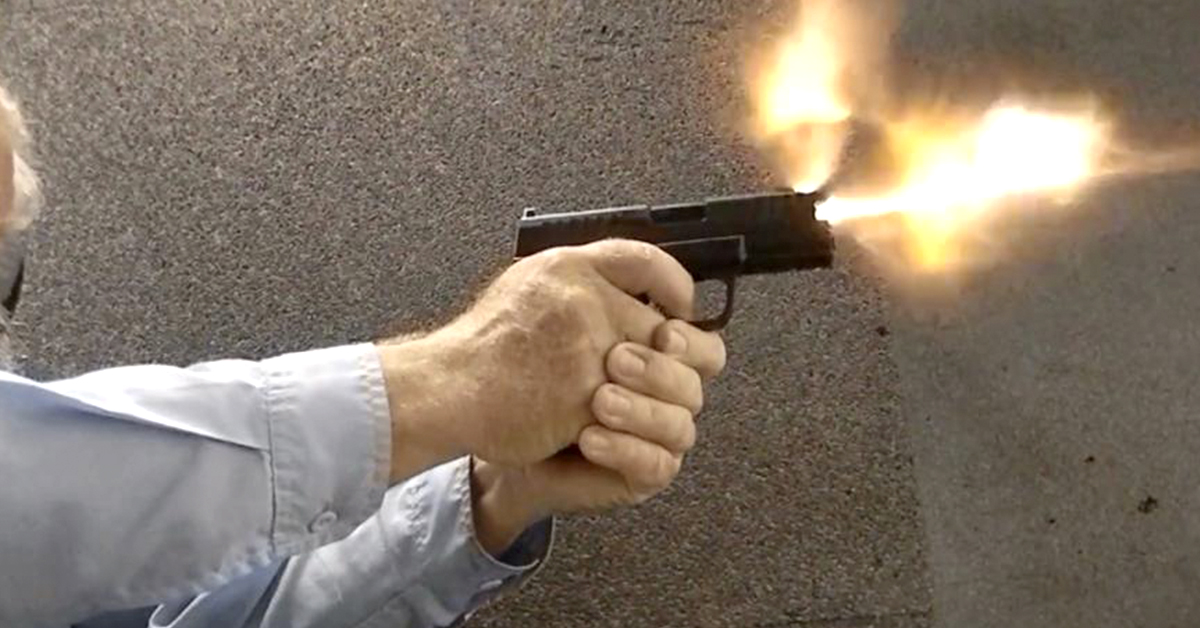
Range Work
I enjoyed a pleasant evening running through 150 cartridges. There were no failures to feed, chamber, fire, or eject. The mild shooting 147-grain loads cycled reliably. The pistol is a good shooting piece. Don’t think you will fire the Springfield Hellcat Pro Comp OSP as well as a full-size pistol, such as the Springfield Echelon. It is lighter and doesn’t have the weight to offset recoil. Just the same, the difference in performance is slight, depending on how you pace your drills.
In short, and in estimate, you will get fifteen center hits with the Echelon in the time it takes to get twelve with the Pro Comp. That is something considering the difference in size and weight. The faster you fire the greater the advantage of a heavier gun. Then compare the piece to a non-compensated Hellcat Pro and the difference is sharper and more evident. The compensator makes quick follow-up shots much faster and better controlled.
Drilling Down on Accuracy
My second and third range sessions involved firing defense loads. These were 1100 to 1200 fps 115- and 124-grain loads for the most part. I used the Fiocchi 124-grain XTP load and Black Hills Ammunition 115-grain EXP. Thanks to the magic of gas redirection, recoil is actually lighter than with the target loads fired. That is a neat trick, my friends. I also tested the Buffalo Bore 124-grain +P+. This is a stout loading that I usually reserve for full-size handguns. This load breaks 1350 fps in the Glock 17 9mm and a strong 1250 fps in the Hellcat Pro Comp OSP. Recoil was there, although somewhat abated, and muzzle flip considerably abbreviated from what I expected. If you are willing to master this loading, it is a viable choice in the Pro Comp.
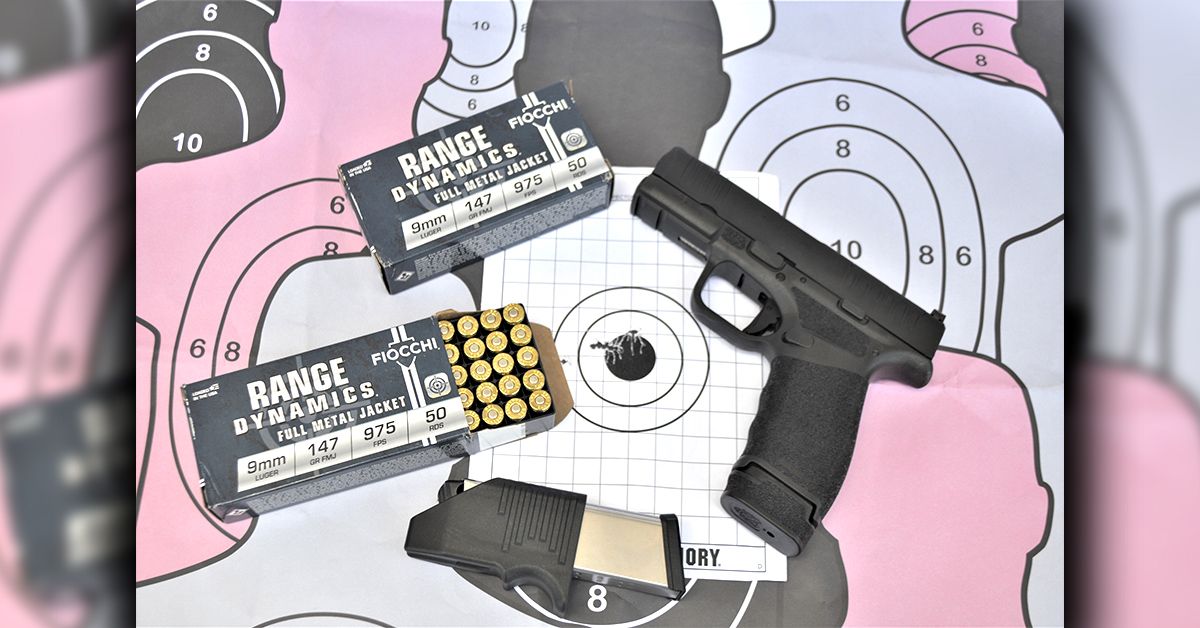
The final step was testing for absolute accuracy. I leaned over the shooting bench and rested the Springfield Hellcat Pro Comp OSP over the MTM Case-Gard shooting rest. This type of braced shooting emphasizes recoil. If a pistol is going to misfeed, this is where it will occur. The Hellcat Pro Comp OSP never failed to feed, chamber, fire, or eject. I stretched the distance to 25 yards. Considering the possibilities of assaults, this isn’t altogether an irrelevant range. I used three loads: Black Hills 124-grain JHP, Fiocchi 147-grain JHP, and Hornady 115-grain Critical Defense. The results were good for such a light pistol. The Hellcat Pro Comp OSP was comfortable to fire in this test.
Accuracy results (two five-shot groups at 25 yards) are as follows:
- Black Hills Ammunition 124-grain JHP – 2.65 inches
- Fiocchi 147-grain JHP – 2.9 inches
- Hornady 115-grain Critical Defense – 2.85 inches
A Perfect-Fit Galco
I used a Galco TacSlide during the evaluation. The TacSlide is a well-made holster suitable for concealed carry and range work. The backing is comfortable, with some flex as you cinch up the holster on the belt. The draw is sharp — very sharp — and fast. I like this combination a lot.
The Springfield Hellcat Pro Comp OSP is an interesting pistol, and one that will serve well for personal defense.
Summary Thoughts
What I…Like
- The easy shooting for the size is a big like, and the sights are good.
…Would Change
- In consideration of the design parameters, nothing.
…Don’t Like
- The magazines are difficult to load to full capacity. Since they feature stiff springs and feed reliably, and the magazines are much shorter than most 15- and 17-round magazines, there seems no way out of this, design wise. So, I just use the supplied speed loader.
Compare To
- There are few pistols comparable to this set up. The SIG P 365 Macro comp is one. The SIG is a good pistol, no question there, and some will like the SIG better. Some will prefer the Hellcat Pro Comp. The Hellcat is more than two hundred dollars less in price, and that will clinch the deal for most. I prefer the Springfield by a margin. FN also makes a compensated pistol. I cannot get past the trigger action of the FN. The Hellcat Pro has a great deal to recommend and will stand tall in any arena.
Springfield Hellcat Pro Comp Specifications
- Caliber: 9mm
- Barrel: 3.7-in., hammer forged steel, Melonite finish, 1:10
- Slide: billet machined, Melonite finish, optics-ready, integral compensator
- Recoil System: dual captive recoil spring w/full-length guide rod
- Frame: black polymer w/adaptive grip texture
- Sights: Tactical Rack U-Dot rear with tritium front
- Action: striker-fired
- Finish: black
- Capacity: 15+1 and 17+1
- Weight: 21 oz. w/flush magazine; 21.4 oz. w/extended mag
- Overall Length: 6.6 in.
- Grip Width: 1-in.
- Height: 4.8-in. w/flush magazine; 5.3-in. w/extended magazine
- MSRP: $699

